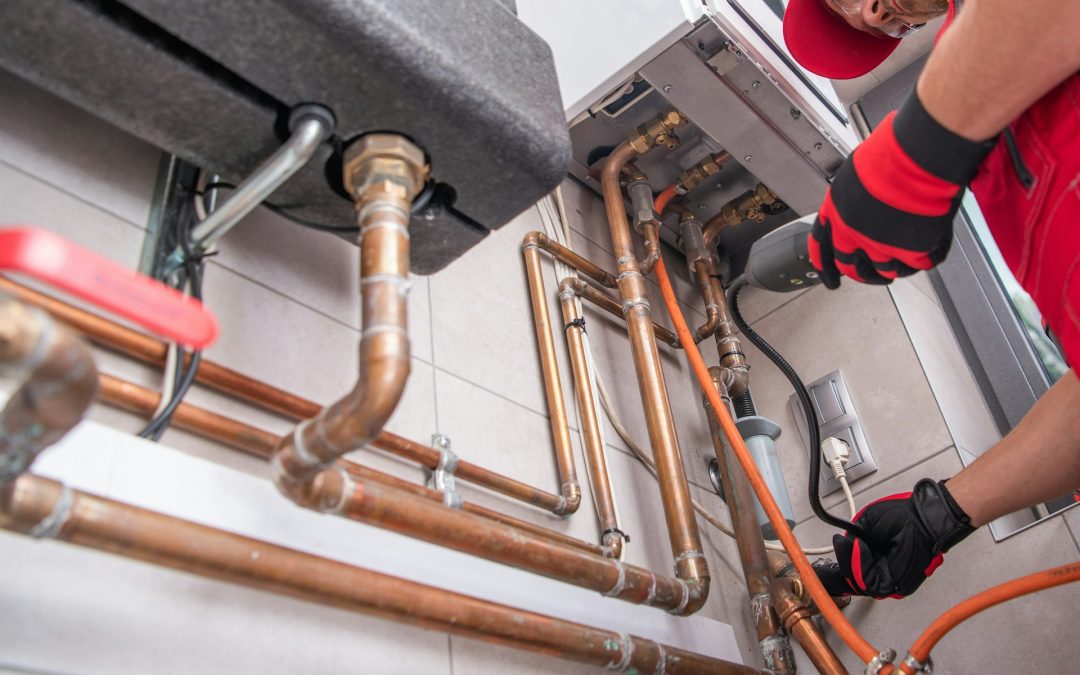Large office buildings face unique plumbing challenges. With many people using the facilities daily, issues can quickly become significant problems. Understanding these common issues helps manage and prevent them more effectively.
Frequent water pipe leaks can disrupt operations and lead to costly repairs. These leaks often go unnoticed until significant damage occurs. Regular checks are crucial to catching and fixing leaks early.
Clogged drains are another frequent problem in office buildings. With many people using restrooms, kitchens, and break rooms, drains can easily become blocked. Recognizing the usual causes of clogs can help prevent them.
Low water pressure is a common issue that frustrates employees. It can affect everything from washing hands to running dishwashers. Identifying the causes of low water pressure and understanding potential solutions is essential for maintaining a functional workspace.
Regular maintenance plays a vital role in preventing severe plumbing issues. Consistent inspections and upkeep ensure that plumbing systems remain efficient and reliable. This proactive approach helps avoid unexpected breakdowns and costly emergency repairs. By addressing these issues head-on, businesses can maintain a comfortable and efficient environment for employees and visitors alike.
Frequent Water Pipe Leaks and Their Impact
Water pipe leaks can cause major problems in large office buildings. Leaks can develop from various sources, including old or corroded pipes, high water pressure, or poor installation practices. Small leaks often go unnoticed but can escalate quickly, causing significant damage to the building and its contents.
The impact of water pipe leaks is vast. Water damage can ruin office equipment, furniture, and even important documents. Persistent moisture can also lead to mold growth, which poses health risks to employees. Mold can spread rapidly, causing respiratory issues and allergic reactions. Leaks can also weaken the structural integrity of a building, affecting drywall, flooring, and ceilings.
Detecting and fixing leaks early is essential. Regular inspections can help spot leaks before they become major issues. Use tools like water meters and moisture sensors to detect hidden leaks. When leaks are found, it’s important to address them immediately to prevent further damage and associated costs. In severe cases, it’s best to seek professional plumbing services to ensure proper repair and prevent future occurrences.
Common Causes of Clogged Drains in Office Buildings
Clogged drains are a frequent issue in office buildings and can disrupt daily operations. With many people using sinks, toilets, and kitchen facilities, it’s easy for drains to become blocked. Understanding the common causes can help prevent these problems.
- Grease Buildup: Kitchen sinks often get clogged with grease and food particles. Even if grease is poured in liquid form, it solidifies in the pipes, leading to blockages.
- Paper Products: Paper towels, sanitary products, and excess toilet paper can cause clogs in restroom drains. These items do not break down easily and can block pipes.
- Soap Scum: Soap residue combines with minerals in the water to form soap scum, which can build up and clog drains over time.
- Hair: Hair from restroom sinks and showers can bind with soap scum and other particles, creating stubborn clogs that require attention.
Preventing clogs involves proper disposal practices and regular cleaning. Place grease traps in kitchens to prevent grease from entering the drains. Encourage employees to use trash bins for paper products and avoid flushing them down toilets. Regularly clean drains with appropriate tools or mild cleaners to keep them flowing freely. If clogs persist, professional plumbers can provide effective solutions and maintain the health of the plumbing system.
Problems with Low Water Pressure: Identification and Solutions
Low water pressure can be annoying and disruptive in an office setting. It can slow down simple tasks like washing hands or rinsing dishes. Identifying the causes of low water pressure helps find the right solutions.
- Clogged Pipes: Over time, minerals and debris build up inside pipes, restricting water flow. This is often the main cause of low water pressure. Professional plumbers can clean and descale pipes to restore proper flow.
- Leaks: Hidden leaks reduce the amount of water reaching fixtures. Check for damp spots, dripping sounds, or unexpectedly high water bills. Fixing leaks promptly restores water pressure and prevents further damage.
- Faulty Fixtures: Sometimes, the problem lies with the fixtures themselves. Old or clogged aerators and showerheads can restrict water flow. Replacing faulty fixtures with newer, water-efficient models can solve pressure issues.
- Pressure Regulators: Buildings often have pressure regulators to manage the water flow. If these malfunction or are set incorrectly, they can lower the water pressure. Adjusting or replacing malfunctioning regulators can improve water pressure.
Understanding these common causes and implementing solutions ensures a consistent and strong water flow in the office, improving overall comfort and efficiency.
The Role of Regular Maintenance in Preventing Severe Plumbing Issues
Regular maintenance plays a vital role in keeping plumbing systems in top shape. By addressing small issues before they escalate, regular upkeep can prevent costly and disruptive plumbing disasters.
- Scheduled Inspections: Regular inspections help spot potential problems early. Professional plumbers can conduct thorough checks of the entire plumbing system, identifying and fixing issues like leaks, corrosion, and faulty fixtures before they become major problems.
- Cleaning and Descaling: Regular cleaning of pipes and drains prevents buildup of debris and mineral scale, which can lead to clogs and low water pressure. Routine maintenance also includes checking and maintaining water heaters, ensuring they operate efficiently and safely.
- Proper Use and Education: Educating employees on proper usage of plumbing facilities helps maintain the system. Simple practices like disposing of waste correctly and reporting issues immediately can make a big difference in preventing plumbing problems.
- Updating Components: Over time, parts of the plumbing system may become outdated or worn. Replacing old pipes, fixtures, and appliances with modern, efficient ones can improve performance and prevent issues. Regularly updating your plumbing system ensures it meets current standards and operates reliably.
By adhering to a regular maintenance schedule, businesses can avoid unexpected plumbing issues, save on repair costs, and ensure a smooth and functional work environment.
Conclusion
Plumbing issues in large office buildings can cause major disruptions. From frequent water pipe leaks to low water pressure, these problems impact daily operations and employee comfort. Understanding and addressing these common issues helps maintain a smooth and efficient workplace.
Frequent inspections and maintenance are key to preventing severe plumbing problems. Regular checks help catch small issues before they become costly repairs. Cleaning and descaling pipes, updating fixtures, and educating employees about proper use all contribute to a well-maintained plumbing system.
When plumbing issues arise, swift action is crucial. Early detection and repair of leaks, clogs, and pressure problems can save money and prevent damage. Investing in modern, water-saving technologies ensures a reliable and efficient system.
Ready to tackle your office plumbing issues? Plumb Krazy Plumbing has the expertise to keep your office running smoothly. Contact us today for reliable and professional commercial plumbing repair. Let’s keep your office plumbing in top shape together.

